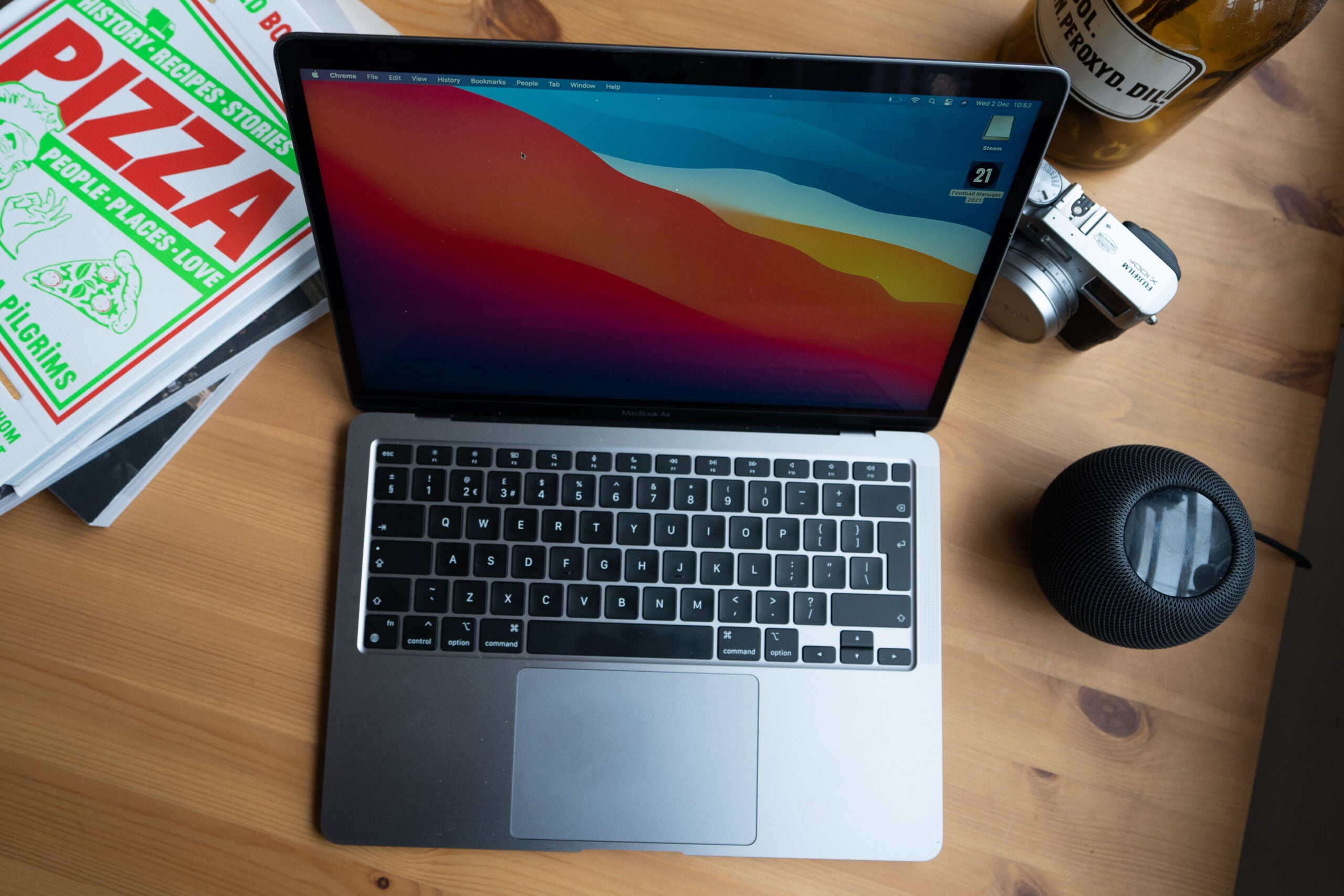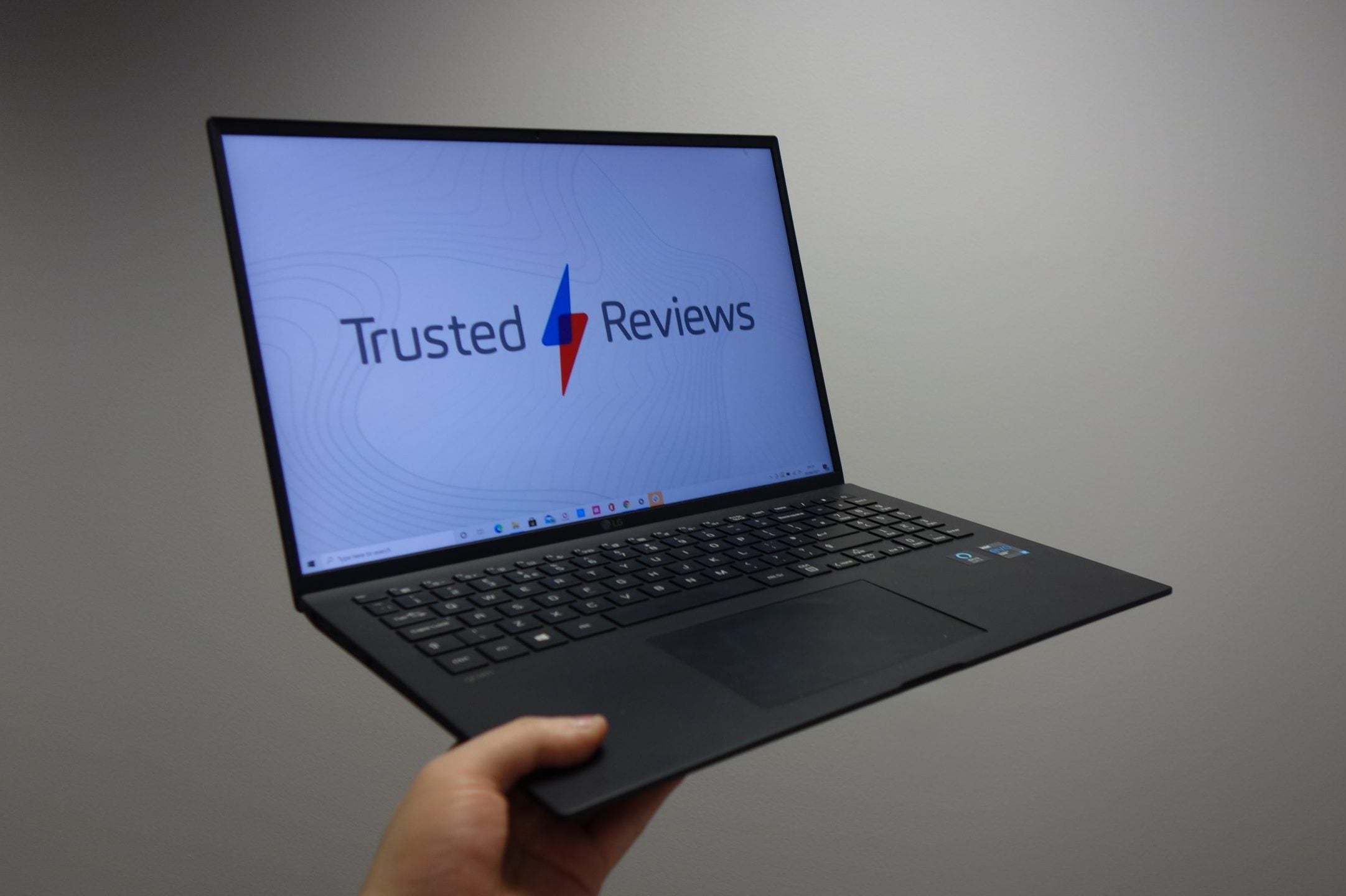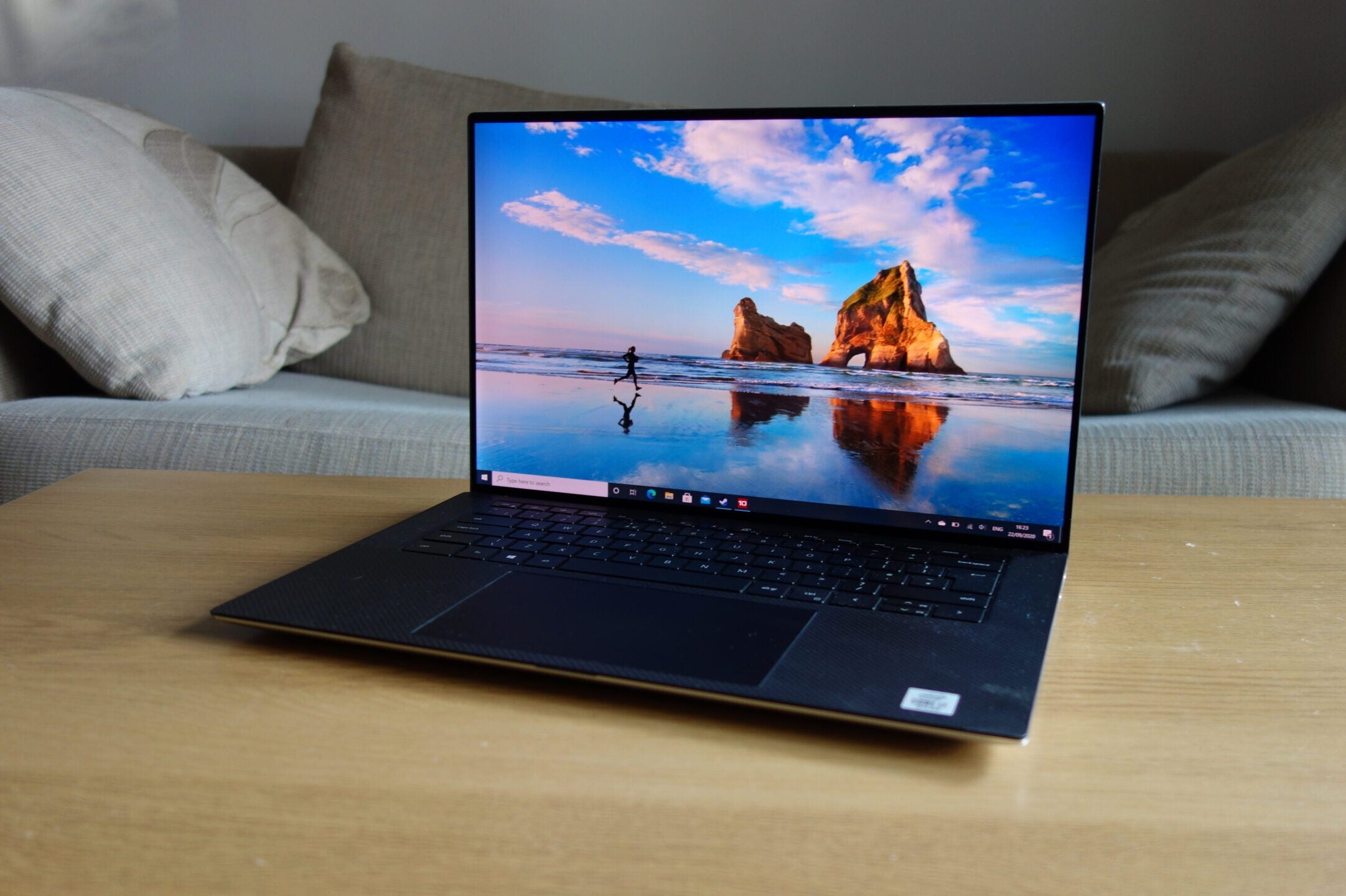Apple MacBook Pro 16-inch Review
Not a huge leap forward, but still the best laptop for creators


Verdict
The MacBook Pro 16-inch is the very best laptop we’ve tested for creative duties. Its screen, keyboard and performance have all seen sizeable improvements, removing the majority of the flaws seen in previous iterations of Apple’s Pro series. This is incredibly expensive, but if you need a laptop to breeze through media tasks, there is no better option than this MacBook Pro.
Pros
- Incredibly powerful
- Bigger display still looks stunning
- Scissor keyboard a huge improvement
- More stylish with smaller bezel
Cons
- Super expensive
- Stingy port offering
- Lack of Wi-Fi 6
Key Specifications
- Review Price: £2799
- Originally reviewed: Dec 11, 2019
- 16-inch 3072 x 1920, LED
- 9th Generation Intel Core CPU
- 16GB RAM
- AMD Radeon Pro 5300M / 5500M
- Up to 8TB SSD
- Dimensions: 358 x 246 x 16.2 mm
- Weight: 2kg
The MacBook Pro 16-inch is the latest iteration of Apple’s laptops aimed at professionals. With industry-leading specs, the new MacBook Pro easily has enough power to blast through intensive tasks such as video editing, animating and 3D modelling.
As the name suggests, Apple has upped the size of the display to 16 inches, and without significantly altering the laptop’s overall footprint compared to the previous 15-inch MacBook Pro. It’s not just the screen that’s seen an upgrade, as Apple has finally ditched the controversial butterfly keyboard in favour of new scissor switches. More high-powered processors and graphics card options also give the MacBook Pro a performance boost.
These are all welcome upgrades but, with a £2399 base price, you’re paying a lot for the privilege. Do the new upgrades safeguard the MacBook Pro as the very best creative-focused laptop, or are you better off going for a Windows alternative?
[videoai]Design
- Apple adopts Scissor switches for more comfortable typing
- Increased screen size thanks to thinner bezel
- We’re still not convinced by Touch Bar
As someone who has been using a 2016 MacBook Pro since its release, I loved and loathed the controversial butterfly keyboard in equal measure. While the larger keys and comfortable layout were great, the lack of travel led to many more typos and accidental presses than I would have liked. What I have yet to suffer, rather luckily it seems, is anything getting stuck inside the keys causing the keyboard to break.
Fortunately, Apple has listened to complaints when designing the MacBook Pro 16-inch, and ditched butterfly mechanism completely and brought the scissor switches back. This gives you more travel – Apple says roughly 1mm, which is 0.5mm more than before, which in turn creates a more responsive keyboard. It really is a pleasure to type on and a massive improvement if you dislike the previous keyboard.
There are a couple of other tweaks that sound small, but make a notable difference on a day-to-day basis. There’s a physical ESC key, the TouchID sensor is now separated from the Touch Bar and there’s an inverted T layout for the direction keys.
The Touch Bar itself, which remains on all models, has also ever-so-slightly been moved further up to try and reduce the number of accidental touches. This makes somewhat of a difference, but I still hit the bar more times than I would like.
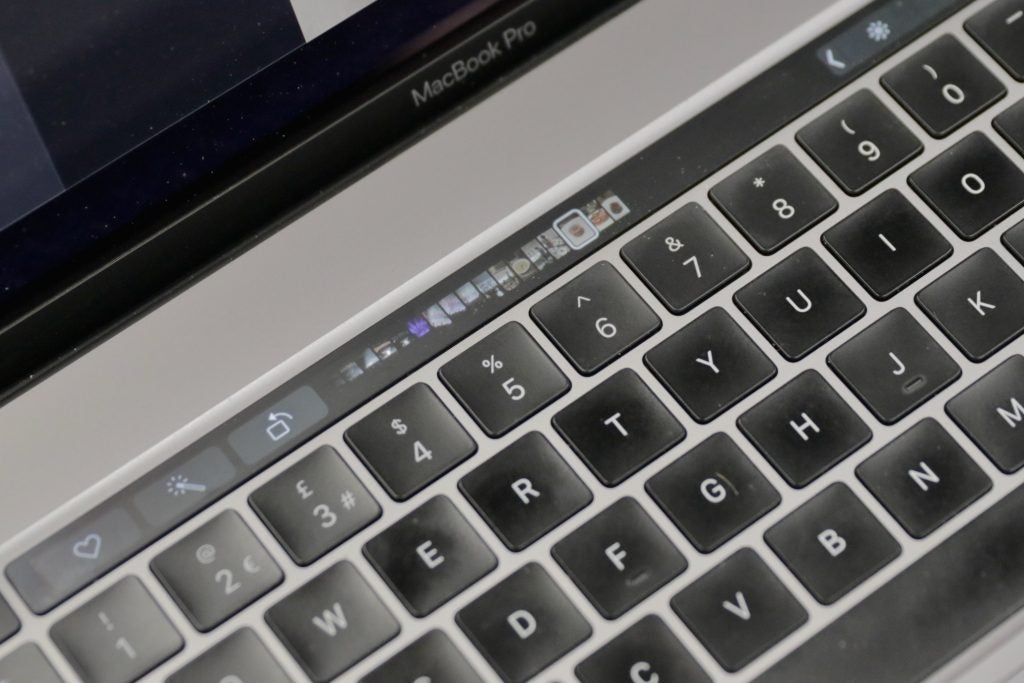
I still haven’t been convinced of the Touch Bars’ merit. The OLED strip offers quick access, in theory anyway, to shortcuts in apps and, well, not much else. The functionality is of course best in Apple’s own apps: Photos, Final Cut and so on. In Photos you can swipe through all your photos and in Music you can change tracks; hardly stuff that’s going to revolutionise how you use a laptop.
What remains the same is the excellent trackpad. It’s gargantuan and responsive; heavily customisable and gives a real impression of moving parts, even though it’s a mere vibration feedback hitting your finger whenever you tap. No Windows trackpad can compare.
If the keyboard is a big change, then the overall design of this laptop is a small one. Glance over this Space Grey or Silver block of aluminium and you’d be hard-pressed to tell if from the last model. It’s slightly bigger, heavier and, of course, has a larger display.
It’s not that much bigger though: 16-inches up from 15.4-inches. To account for this bigger display the bezel has been slimmed down and it looks a lot nicer as a result. Still, it’s not a huge step forward. I would have liked a bigger design change, maybe with an even thinner bezel or some new colour options. But Apple isn’t a company which shifts designs constantly, it is far more likely to keep the same look for years.
I have tried to fit this laptop into laptop cases and bags that claim to be made for the 15-inch model and it has fit into all of them. Maybe if yours originally was a tight fit you might have issues, but for most people it should be fine. What it is though is heavy – really heavy. I kind of expected as much from such a large laptop but you will notice that weight on your back, especially if you’re coming from the 13-inch model.
Display
- Misses out on 4K, but screen still looks fantastic
- Colour coverage is among the best of any laptop
- Brightness is far beyond the laptop average
How do you improve upon a laptop display already renowned as one of the industry’s best? Make it even bigger. The new 16-inch MacBook Pro screen may only be less than an inch bigger than the previous, but still a welcome upgrade. Apple hasn’t had to make any compromises to achieve this new screen size, sticking to its favoured 16:10 aspect ratio and retaining the footprint of its 15-inch predecessor.
The picture quality of the MacBook Pro remains incredibly good, and arguably the biggest draw compared to competing laptops. The 3072 x 1920 resolution may be shy of hitting 4K, but still presents a wonderfully crisp and detailed picture.
The 100% sRGB coverage is as good as you could hope for, displaying a perfect picture for digital art. The 84% Adobe RGB coverage is even more impressive, with the MacBook Pro flaunting one of the best panels available for accurately displaying photos and videos.
The 6412K white visual colour temperature further emphasises the accuracy of the laptop’s display, proving the MacBook Pro is capable of producing a natural white light that isn’t distorted by warm or cool hues.
Apple also boasts a peak brightness of 500 nits. Our own test model was limited to 478 nits, but that is still supremely high, with most other laptops aiming to surpass 300 nits.
The 0.36 nit black level isn’t quite as impressive, and is actually worse than the average laptop at displaying deep dark blacks. But since the peak brightness is so good, the MacBook Pro 15 still scores an excellent 1469:1 contrast ratio and results in a gorgeous picture.
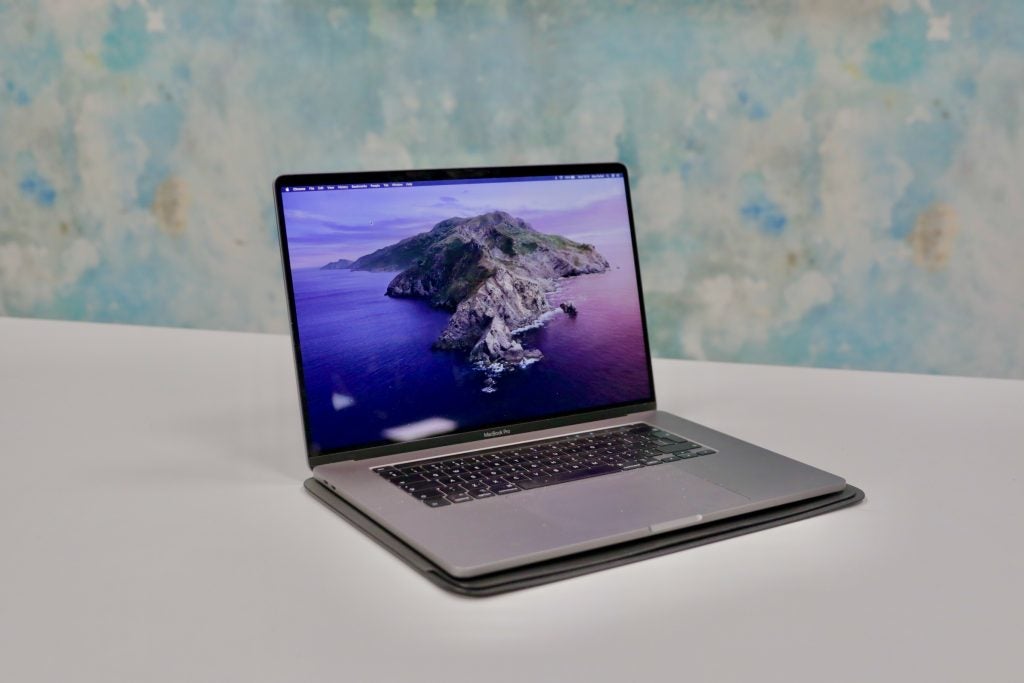
Performance
- Intel processor feels outdated now
- AMD GPU ensures a top class performance
- Built-in SSD is lightning quick
Apple’s MacBook Pro has long been our one of our top recommended laptops for media work thanks to its super-powered components. The new 16-inch model doesn’t slack on specs, with 9th Generation Intel Core processors and AMD’s Radeon Radeon Pro 5000M series GPUs combining for a top-class performance.
Some may be disappointed Apple snubbed Intel’s newly released 10th Gen offering, which the likes of the Dell XPS 13 and Microsoft’s Surface Laptop 3 snapped up. However, our benchmark results show the MacBook Pro’s 9th Generation Intel Core i9 processor is actually substantially more powerful than the 10th Gen chips found in those laptops.
The omission of a 10th Gen Intel chip may not be an issue for performance then, but it does mean the MacBook Pro lacks support for Wi-Fi 6 and therefore won’t reap the benefits of new technology that makes internet connectivity faster and more reliable when paired with a compatible router.
| MacBook Pro 16 (2019) | Surface Laptop 3 (15-inch, Intel) | |
| Price | £2799 | £2129 |
| Geekbench 5 single-core | 1211 | 1320 |
| Geekbench 5 multi-core | 6631 | 4885 |
| Cinebench R15 (fps) | 126.73 | 71.08 |
| Read speeds (MB/s) | 2884 | 2062 |
| Write speeds (MB/s) | 2720 | 809 |
The 16GB RAM no doubt helps to achieve this high level performance, ensuring this laptop can run intensive applications without issue.
The AMD Radeon Pro 500M graphics card affords the MacBook Pro the graphical grunt required for video editing, animation and 3D modeling. Cinebench R15 is our favoured benchmark test for evaluating such a performance, and the MacBook Pro saw an impressive 126.73fps result. No other laptop we’ve tested comes close to this figure, proving the MacBook Pro is in a league of its own when dealing with demanding creative tasks.
Do take note we are testing the most powerful MacBook Pro base configuration, which costs a whopping £2799. The cheaper £2399 MacBook Pro won’t see performance results quite this high, but I can safely assume it will still be notably more powerful than the majority of laptops on the market. Still, that means comparing it to the Surface Laptop 3 is a tad unfair, but few laptops can lay a finger on Apple.
Our review unit of the MacBook Pro also sees a huge 1TB SSD, which provides plenty enough storage for most. The read and write speeds of this SSD are some of the best I’ve seen too, coming in at 2884MB/s and 2730MB/s respectively. This means loading and saving data onto this system should take minimal time, which is obviously important for a creative-driven machine.
The speakers are absolutely excellent too, easily some of the loudest and clearest I have ever had the pleasure of listening to on a laptop. Sound is bassy and clear and never distorts even when you pump it right up.
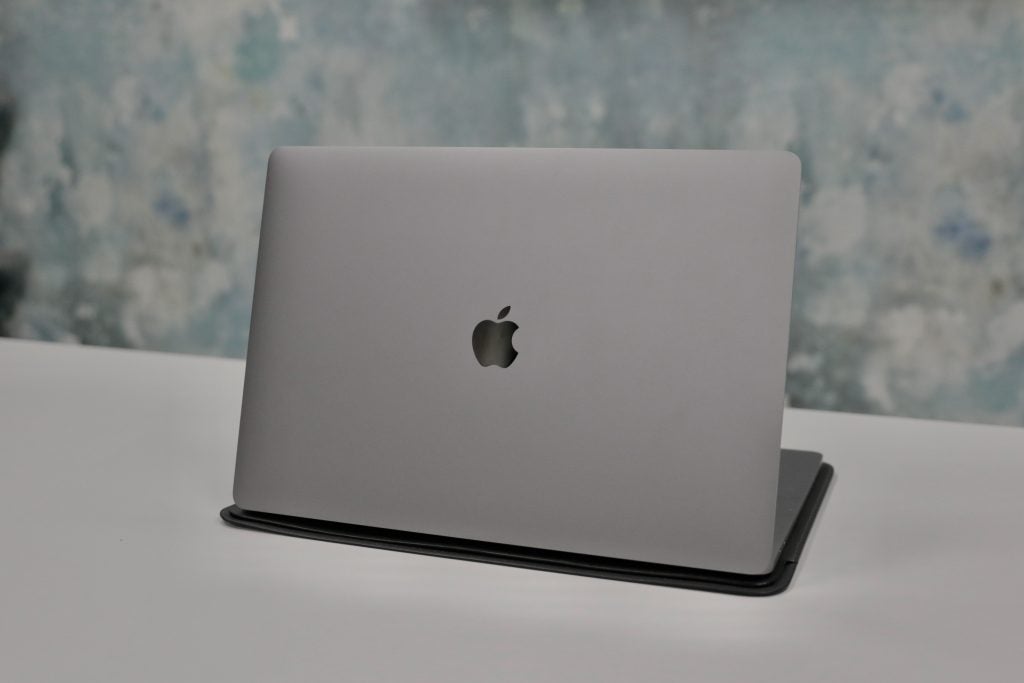
I won’t go into too much detail about MacOS or the latest update Catalina, however there are a few notable features that arrived with the update that have changed the way I use my Mac.
The biggest of these is Sidecar. This is a clever way of extending your Mac’s display onto an iPad, either by a cable or Wi-Fi. It’s an ingenious trick that has been pretty much plucked from the excellent Duet Display app.
It’s an easy way of getting a little more space and works very well. I’ll move my to-do list onto the iPad, or my notes for a review. You can also use the iPad’s own tricks, like the Apple Pencil to have more intricate control in something like Final Cut. One slight note is that the display on the iPad is calibrated differently to the MacBook Pro, so it’s not ideal if you’re using it for stuff that needs to be colour-corrected.
Catalina also brings iPad apps to the Mac, though don’t expect all your favourites to be here. Take up on these apps seems slow and the only ‘big’ app built using this method I can find is Twitter. Others are there, but don’t expect Netflix.
Other Catalina changes include the splitting up of iTunes into Music, Podcasts and TV – all nice enough apps that perform their individual functions well and the Screen Time feature seen previously on iOS.
Battery
- MacBook Pro lasts 9 hours and 30 minutes when looping 4K video
- Takes just 90 minutes to replenish 90% battery tank
One stumbling block ultra-powered laptops frequently hit is the battery life, with a dedicated graphics card and high resolution display proving a big leech on a device’s stamina.
Apple has overcome this issue, fitting in a 58.2Wh lithium‑polymer battery larger than the 46Wh cell found within the Surface Laptop 3. This results in an admirable battery performance, as we saw the MacBook Pro last roughly 9 hours and 30 minutes when looping a 4K video continuously with the brightness pared back to 150 nits. With brightness cranked up to the top and using for my day-today tasks (web browsing and writing up reviews etc), the MacBook Pro still easily lasts a work day.
Battery life replenishes speedily too, with the MacBook Pro capable of juicing 90% of its tank in just 90 minutes with the bundled charger. This will be a godsend for anyone who forgets to top up the battery over night.
Conclusion
As you’d expect, the MacBook Pro is the perfect laptop for media professionals who need a device for demanding media tasks such as video editing, animating and 3D modelling. There’s simply no other laptop that can challenge the performance and display quality of Apple’s portable pro.
This new MacBook Pro has seen a number of big upgrades on the previous model too. Not only is there the bigger 16-inch screen, but it’s also seen a significant keyboard upgrade and a big boost in CPU and GPU performance.
With Apple addressing major flaws of previous iterations of the MacBook Pro, there really aren’t many negative points left. The lack of Wi-Fi 6 is slightly disappointing, as is the lack of SD card slot or USB-A port for those who don’t want to carry an external hub, but they are niggling issues at best.
It’s also impossible not to mention that extravagant price, but with the performance and display proving to be some of the very best in any laptop, it’s more than justified compared to Windows alternatives.
You should buy it if…
- You want the ultimate laptop for content creation
The MacBook Pro 16 ticks every box for content creation, including sublime GPU power and an incredibly accurate screen. There is no better alternative right now.
- You’re an Apple fan
There are Windows alternatives to the MacBook Pro, but if you’re a big fan of Apple and its macOS software you won’t want to look elsewhere.
- You want a MacBook with a great keyboard
The keyboard has been one of the biggest issues with previous MacBooks is the past, but the new scissor switches make the keys significantly more comfortable.
You shouldn’t buy it if…
- You don’t need a high-end performance
If you just need a laptop for basic productivity tasks, then Apple’s MacBook Air is a more affordable option. The MacBook Pro should only be considered if you require high-end power.
- You’re looking for a bargain
The MacBook Pro is our favourite laptop for high-end tasks, but you can get cheaper alternatives if you’re happy to switch to Windows.
- You can wait for the MacBook Pro 2021
A new model of the MacBook Pro is expected to arrive in Q3 2021, packing Apple Silicon and featuring a more modern design. If you’re able to wait a few extra months, we recommend waiting for the next model.
FAQs
No, the MacBook Pro does not feature a touchscreen.
Click ‘System Preferences’ on the Apple Menu, and then click ‘Software Update’. If there are any updates available, the ‘Update Now’ button should pop up. Hit that, and your MacBook should begin to update.
This model of the MacBook Pro does not have any of the traditional USB-A ports, but it does instead feature the more modern USB-C port. You’ll need an adapter if you want to hook up old peripherals or USB sticks etc.
Specifications
Jargon buster
Butterfly Switches
Apple’s old keyboard mechanism which was previously criticised for being uncomfortable to type on.
Scissor switches
Apple’s new and improved keyboard mechanism.
Touch Bar
Apple’s touch-friendly strip that lets you use dedicated shortcuts for select apps, including the Adobe suite.
OLED
Organic Light Emitting Diode is panel technology that allows each individual pixel to produce light rather than relying on a backlight. This enables the screen to accurately display blacks by turning off the pixel, resulting in improved contrast compared to conventional LCD panels.
Colour Gamut
The range of colours an output device is capable of reproducing.
GPU
The graphics processing unit is designed to render graphics, which is particularly important for gaming, creating 3D models and editing video.
Wi-Fi 6
One of the latest wireless standards that allows for faster speeds and better coverage when paired with compatible routers.

